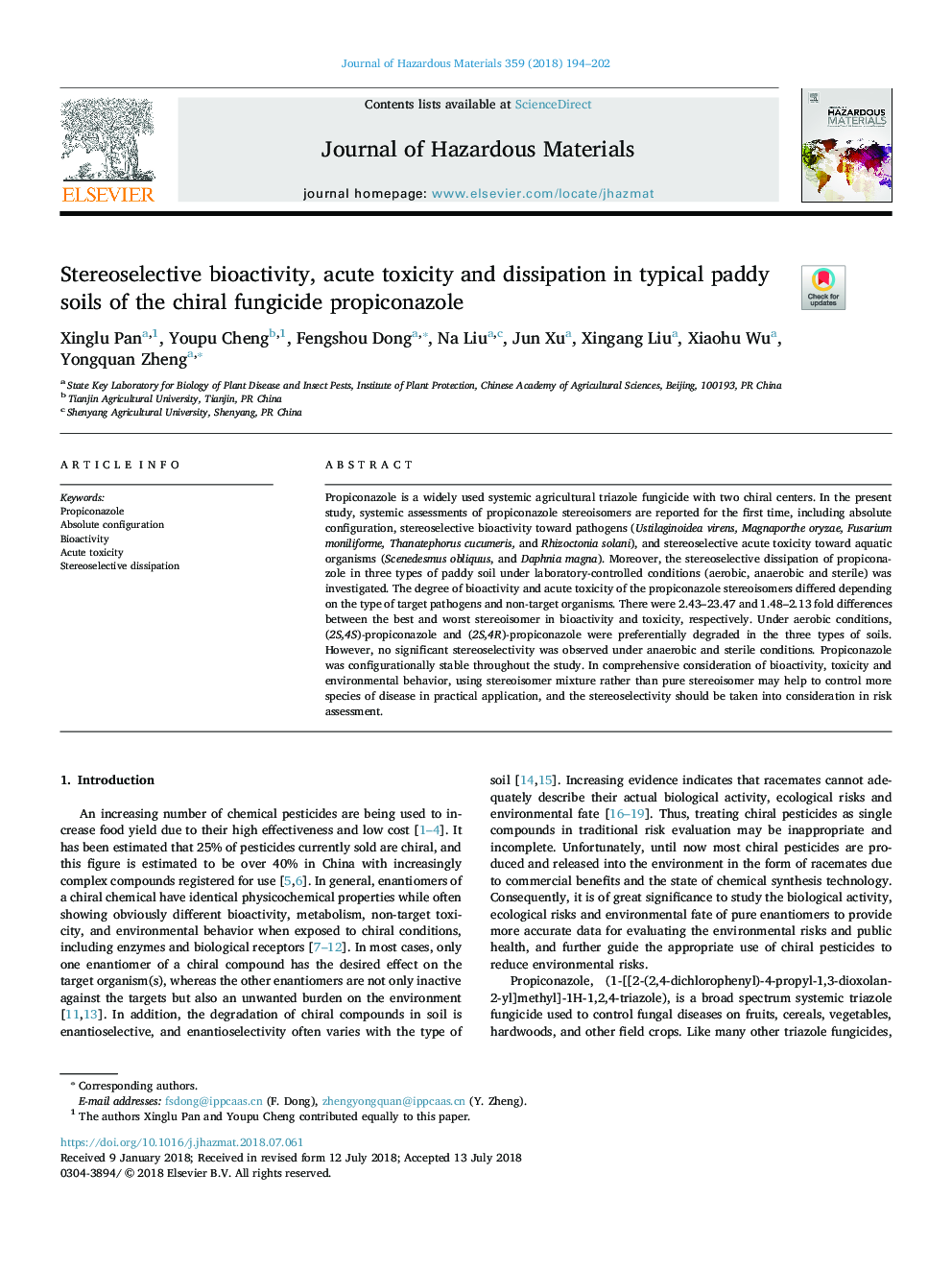| Article ID | Journal | Published Year | Pages | File Type |
|---|---|---|---|---|
| 6967879 | Journal of Hazardous Materials | 2018 | 9 Pages |
Abstract
Propiconazole is a widely used systemic agricultural triazole fungicide with two chiral centers. In the present study, systemic assessments of propiconazole stereoisomers are reported for the first time, including absolute configuration, stereoselective bioactivity toward pathogens (Ustilaginoidea virens, Magnaporthe oryzae, Fusarium moniliforme, Thanatephorus cucumeris, and Rhizoctonia solani), and stereoselective acute toxicity toward aquatic organisms (Scenedesmus obliquus, and Daphnia magna). Moreover, the stereoselective dissipation of propiconazole in three types of paddy soil under laboratory-controlled conditions (aerobic, anaerobic and sterile) was investigated. The degree of bioactivity and acute toxicity of the propiconazole stereoisomers differed depending on the type of target pathogens and non-target organisms. There were 2.43-23.47 and 1.48-2.13 fold differences between the best and worst stereoisomer in bioactivity and toxicity, respectively. Under aerobic conditions, (2S,4S)-propiconazole and (2S,4R)-propiconazole were preferentially degraded in the three types of soils. However, no significant stereoselectivity was observed under anaerobic and sterile conditions. Propiconazole was configurationally stable throughout the study. In comprehensive consideration of bioactivity, toxicity and environmental behavior, using stereoisomer mixture rather than pure stereoisomer may help to control more species of disease in practical application, and the stereoselectivity should be taken into consideration in risk assessment.
Related Topics
Physical Sciences and Engineering
Chemical Engineering
Chemical Health and Safety
Authors
Xinglu Pan, Youpu Cheng, Fengshou Dong, Na Liu, Jun Xu, Xingang Liu, Xiaohu Wu, Yongquan Zheng,
